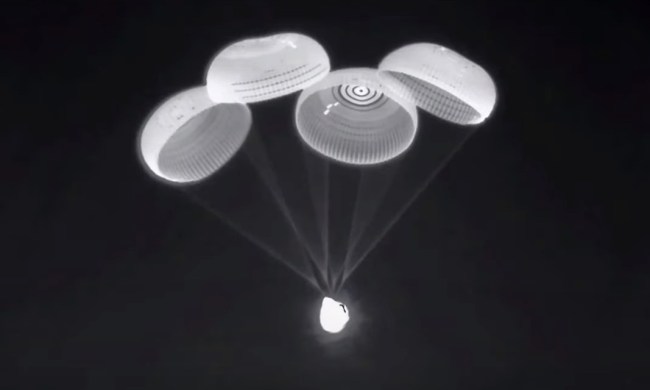SpaceX has put a Crew Dragon on Pad 40 at the Kennedy Space Center in Florida for the first time. This means that going forward, SpaceX will have two pads to choose from when sending astronauts to space.
Up to now, crews launching on SpaceX’s Crew Dragon spacecraft lift off from Pad 39A at Kennedy, but having another launch site available gives NASA and SpaceX greater flexibility when planning missions by easing pressure on teams if scheduling issues and traffic conflicts arise.
As part of building out the crew facilities for Pad 40, SpaceX tested its new emergency chute that allows astronauts to make a quick escape from the launchpad in the event of an issue shortly before liftoff. Astronauts are strapped into their Crew Dragon seats for several hours before launch, and so if an anomaly occurs in that time and the astronauts need to get out, or if an astronaut becomes incapacitated for whatever reason, the chute offers a rapid exit path.
SpaceX shared a video showing what it’s like to take a ride down the chute from 230 feet (70 meters) up, all the way to the ground.
Teams test the new emergency chutes from the pad 40 crew tower in Florida pic.twitter.com/rWVj7zaHp0
— SpaceX (@SpaceX) March 19, 2024
The chute complements the more rapid emergency system that propels the Crew Dragon away from the Falcon 9 rocket at speed in the event of a serious anomaly. This system can be used before launch or in the early stages of flight.
On the integration of Pad 40 to SpaceX’s crewed launch endeavors, Daniel Forrestal, launch integration manager at NASA’s Commercial Crew Program, said, “We wouldn’t have guessed this 10 years ago out here at KSC (Kennedy Space Center), but what’s become one of the biggest constraints to launching is pad availability because business is booming here at the Space Coast and at Kennedy with not just SpaceX but with all the folks launching. Bringing [Pad] 40 online just gives us more flexibility.”
SpaceX shared photos of a Crew Dragon on Pad 40 for the first time:
Dragon 2 vertical on pad 40 for the first time pic.twitter.com/MMg3QCTVLy
— SpaceX (@SpaceX) March 19, 2024
The last time a Dragon spacecraft launched from Pad 40 bound for the ISS was SpaceX’s CRS-20 cargo-only mission in March 2020.
It’s unclear if SpaceX’s Crew-9 will be the first astronauts to lift off from Pad 40 or whether a later crew will share that honor.


